
© Wendy Pye
Interestingly there’s an article in today’s Observer newspaper by Geraldine Bedell (The spectral memorials that haunt our roads) exploring the phenomenon of ghost bikes, which I coincidently wrote about in the blog last week. The article features a series of photographs by Katherine Rose of ghost bikes shot at night.
Spectre is also the title of an exhibition in the Brighton Photo Fringe featuring work by the photographers Karen Grainger, Wendy Pye, Toby Smith, Jackie Castellano, Kristy Gosling, Richard Kolker and Adrian Wood.
The exhibition explores several subjects surrounding the theme of the ‘Spectre’ and includes “the social impact of online virtual escape worlds, video work exploring the relationship between depression and perception, undercover cold war archaeology, the aging process and photography’s more conceptual relationship with death and the ghost.”
I’m particularly interested in seeing the work of Wendy Pye, which explores the landscape of Beachy Head, a beauty spot in Sussex and notorious location for people attempting suicide. The image above shows flowers left at the scene of a suicide, photographed at night.
You can find out details of the exhibition on this dedicated website.
Posted in MISCELLANEOUS, PLACES | Comments Off on THE SPECTRE
September 7th, 2008 admin
We’re heading home!Â
Having made it to the England-Scotland border just north of Berwick-upon-Tweed we’re now going to spend the next seven days driving down the historic A1 to London then on to Brighton. Up until now we’ve made very few journey’s via motorways, preferring to take more minor (and therefore slower) roads, but it seems apt to finish the trip following the route of the Great North Road – which the modern A1 mainly follows.
The Great North Road was a major coaching route in Britain and was used by the mail coaches between London, York and Edinburgh. It is often mentioned in English literature, for example Pickwick Papers by Charles Dickens. The modern course of the A1 diverges somewhat from the Great North Road, particularly where it passed through a town or village that has subsequently been bypassed, or where new motorway standard road has been constructed on a more direct route.Â
The A1 is the longest numbered road in the UK at 409 miles (658km) long and connects the capital of England (London) with the capital of Scotland (Edinburgh). It was once the busiest motorway in the country with an active roadside economy of shops, cafes, hotels. In the 1950s it was supplanted by the newly constructed M1 a speedier and smoother motorway for an England moving slickly into a modernity of effeciency and consumerism.Â
Â
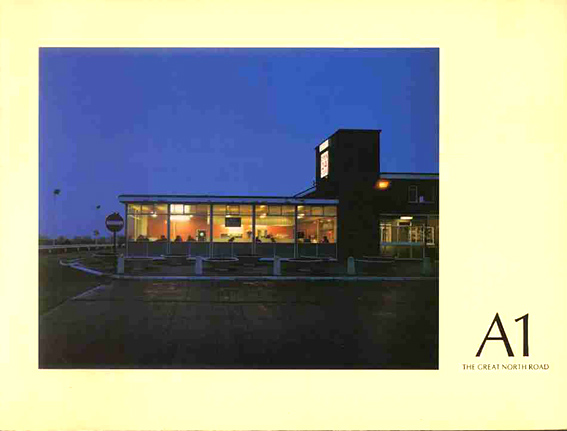
Â
Photographically, the A1 is most readily associated with the work of British photographer Paul Graham. Graham spent two years photographing along the route of the A1 with a large format camera. The work was eventually published in 1983. A1 —The Great North Road was Graham’s first book and contained 41 color reproductions.
Â
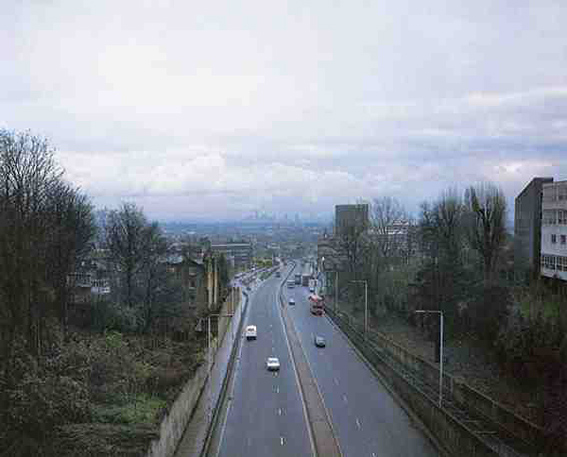
© Paul Graham, 1983
The photographs are a mournful document of a grey nowhere land in a country moving too fast to stop for a cup of tea. The book is now a valuable collectors item, valued at over £250, not bad for a self-published paper back! I’ve posted up a couple of the pictures from the book here, but you can see more on Graham’s website.
Â
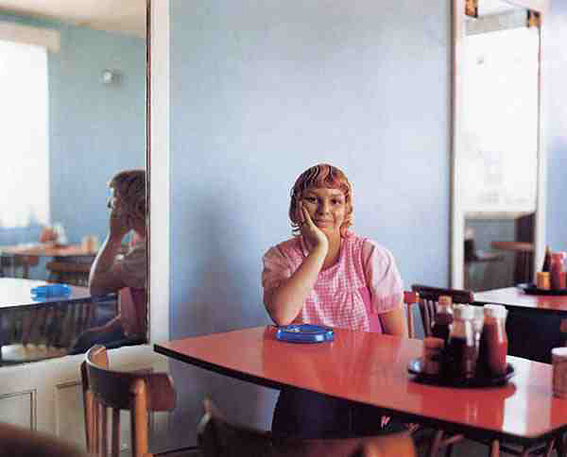
© Paul Graham, 1983
According to many commentators, Graham’s A1 photographs had a transformative effect on the black and white tradition that had dominated British art photography till that point. This work, along with Graham’s later photographs of the 1980s – the colour images of unemployment offices in Beyond Caring (1984-85), and the sectarian marked landscape of Northern Ireland Troubled Land (1984-86) – were pivotal in reinvigorating and expanding this area of photography, by both broadening it’s visual language, and questioning our notions of what such photography could say, be, or look like.   Photographers like Martin Parr made the switch to colour soon after, and a new school of British Photography evolved with the subsequent colour work of Richard Billingham, Tom Wood, Paul Seawright, Anna Fox, among others.
Â
Posted in INSPIRATION, PLACES, TRIP LOGISTICS | 5 Comments »
September 4th, 2008 admin
After an unsettled night free-camping in Carlisle’s Rickerby Park, where we inadvertently found ourselves parked near a road favoured by the cities boy-racers (it was 11.30pm and too late to move!), we’re now driving through the county of Northumberland.Â
Once part of the Roman Empire and the scene of many wars between England and Scotland, Northumberland has a long and violent history. The bloodiest battle currently taking place in the county (well in Tyne & Weir which was historically part of Northumberland) appears to be at Newcastle United FC where the club’s fans have declared war on Mike Ashley, Newscatle’s owner, over the forced departure of coach Kevin Keegan. Such is the passion that football stirs amongst Tyneside fans.
We’ll be spending the remainder of the week in the county driving along Hadrian’s Wall, stopping off at Kielder Water (the largest man-made lake in Western Europe) then heading north up the coast to our final destination of Berwick-upon-Tweed near the border with Scotland.
Â
Posted in PLACES, TRIP LOGISTICS | Comments Off on BOY RACERS & BLOODY BATTLES
After nearly four months on the road we’ve now arrived in Cleator Moor, the small Cumbrian town where my mum grew up and where many of her extended family still reside. It’s been a place of pilgrimage for our family almost every summer since she left for London in her early twenties.
In his thoroughly researched book Cleator and Cleator Moor, Past and Present, which first published in 1916, Caesar Caine, Vicar of Cleator, wrote: “The ancient parish of Cleator lies midway between St. Bees on the Cumberland coast, and Ennerdale Lake which is embosomed amid the most westerly summits of the Cumbrian hills. From either of these beautiful, and deservedly popular resorts, Cleator can be reached by the pedestrian in about an hour. Nor is Cleator to be despised by the lover of nature and the sight-seer, in spite of its mines and manufactures of to-day. The place has many beauty spots, and boasts of an overshadowing mountain, rich in wild life….without its mines, manufactures, and rows of houses, [Cleator] has become most familiar to me, and I have learned to love it more, in some respects, as it was, rather than it is.â€
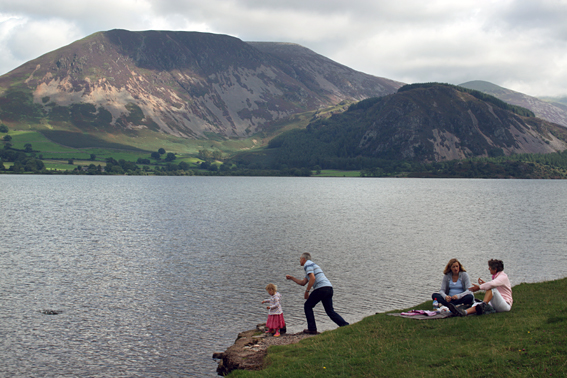
Picnic on Lake Ennerdale
Joined by my mum and dad, we’ll be spending the next few days visiting – and photographing – some of the holiday spots around Cleator Moor, resurrecting old family traditions such as walking along St Bees Head, having a bbq on the shores of Crummock Water, attending some County shows, throwing skimmers into Lake Ennerdale and climbing some mountains (such as Scafell Pike- below).
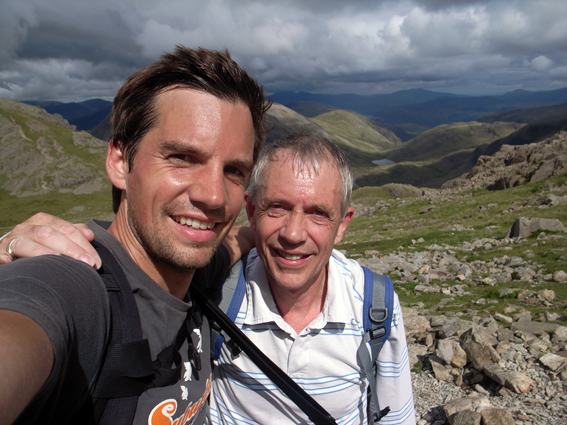
Dad and I climbing Scafell Pike from Wasdale Head
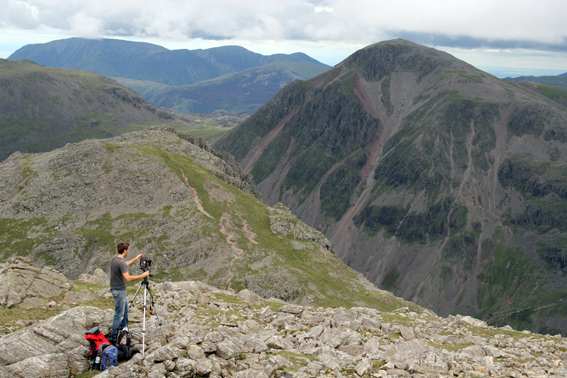
Photographing climbers on Scafell Pike
Â
Posted in PLACES | Comments Off on FAMILY TRADITIONS
August’s unseasonably wet weather has played havoc with Cumbria’s county shows after the region saw almost an entire month’s worth of rainfall within the first 12 days. In the past week alone over half a dozen county shows have been cancelled due to flooded fields, among them the Keswick Agricultural Show, Lunesdale Show, Hawkshead Agricultural Show and Rydal Sheepdog Trials and Hound Show. The latter was cancelled for only the third time in its 106-year history.
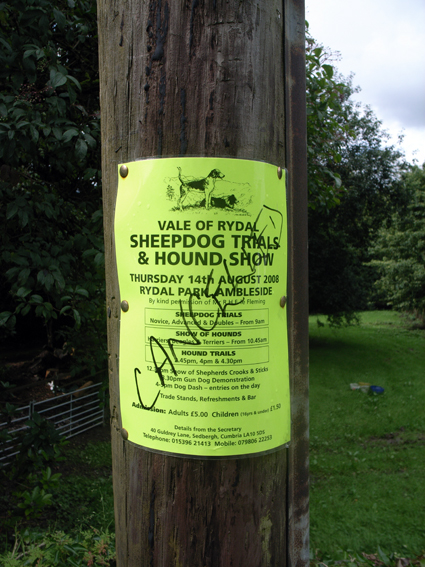
Â
The county show has been a summer fixture in most Cumbrian towns and villages for over a century and has always been of vital importance to the local community. Many of the shows have managed to remain genuinely traditional Lakeland affairs. So I was particularly disappointed to hear that the Patterdale Dog Day had been cancelled this week due to a waterlogged field. The show has kept to its original format and fiercely resisted the lure of commercialization.
This is in stark contrast to many of the national agricultural shows such as The Royal Show which I attended earlier this year, where I counted an astonishing 48 corporate sponsors including HSBC, Trinity Private Wealth Management, RAC, Muller, Renotherm foam insulation, McDonalds and all the major supermarket chains who were trumpeting their support of British farmers. (Such as M&S, one of the major ‘partners’ of the show, who had a large hospitality tent for their clients).

Â
I’m planning to attend the Grasmere Sports And Show this weekend so decided to phone the organizers to check that it would still be going ahead. The reply I got from the director of the show was definitive: “Young man, Grasmere Sports has been running since 1852 and never been cancelled. It went ahead during both World Wars so it’s going to take a lot more than a few drops of rain to stop us this year!â€
One show that did beat the rain this week was held at Gosforth (it only went ahead following an emergency committee meeting on Monday). It was a very understated affair with the traditional mix of horse and pony displays, Cumberland and Westmoreland wrestling, a local produce tent and various competitions. Peter Wright’s honey won the best exhibit in the section, while Gosforth WI took first prize in their category with their exhibit ‘A leisurely lunch’. In the horticulture tent, Mark Hewertson, who won in the gladioli, pansies and fuschia categories, was named the Best in Show. My favourite competition judging took place in the poultry tent where Robert Brown, from Uldale, took the top prize with his clay/wheaten.Â
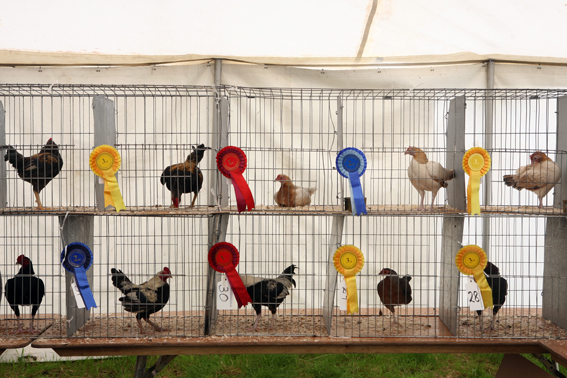
Â
The Ennerdale and Kinniside Show also went ahead despite driving rain. It took place at Kirkland Leaps showfield. The event started life in 1895 as a village flower show and “Scholars Picnic†with the sole purpose of raising money to send the children of Ennerdale and Kinniside school on a day trip.
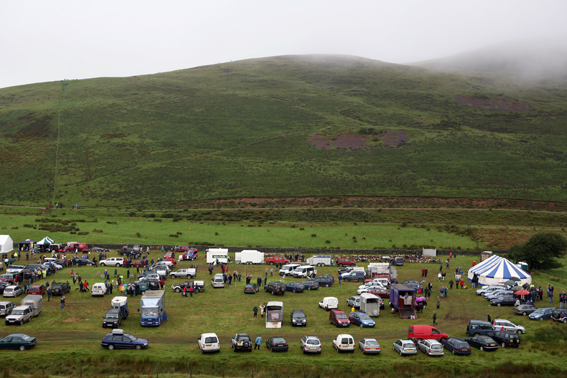
Â
From 1900 sheep were introduced, then sports and other livestock until it became known as T’laal Royal. Typical in its links with the valley, village and farming communities Ennerdale Show has also had a special relationship with the people of industrial West Cumbria.Â
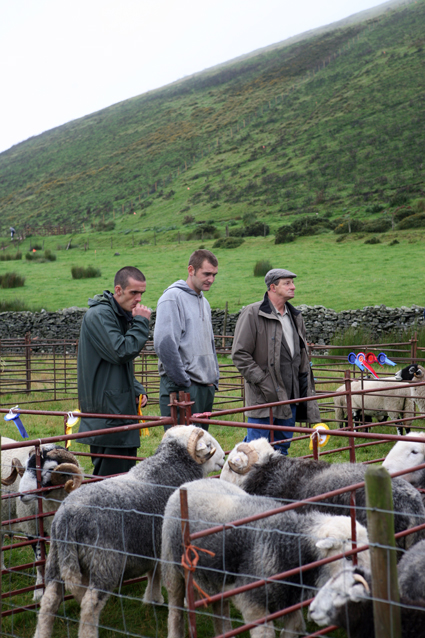
Â
Posted in EVENTS & PASTIMES, PLACES | 1 Comment »
“To view the landscape as a pictorial composition of elements is simplistic. To perceive the landscape within a set of rules (art, science, politics, religion, community, business, industry, sport and leisure) is a way people can deal with the complexity of meanings that are presented in our environment. We are collectively responsible for shaping the landscape we occupy and in turn the landscape shapes us whether we are aware of it or not.” John Davies
One of the most impressive books published in the last decade by a British photographer looking at Britain is by the celebrated landscape photographer John Davies. The British Landscape (published: Chris Boot Ltd, 2006) features 60 of Davies’ landscape photographs of Britain, made between 1979 and 2005, presented in the order in which they were taken on a large scale with excellent printing reproduction.
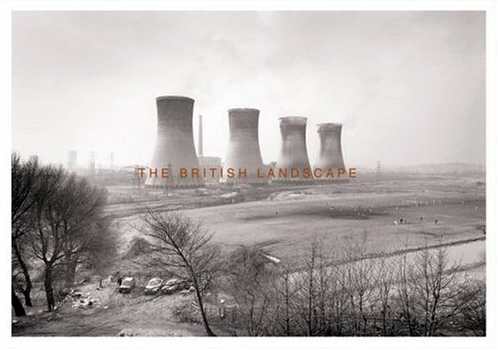
I was reminded of Davies’ book while wandering the labyrinth of paths around the North Allotment in Easington Colliery trying to track down Billy Marr’s pigeon lofts. It was here that Davies took one of his celebrated photographs ‘Allotments, Easington Colliery, County Durham’ over twenty years ago. The photograph (reproduced below) shows one of the footpaths through the allotments with a series of old wooden doors used as fences, while in the distance are hundreds of terraced ‘colliery houses’ under a signature moody sky. The photograph is reproduced in his book and was originally taken for an exhibition commission called Durham Coalfield, which was first shown at Side Gallery in Newcastle, 1983.
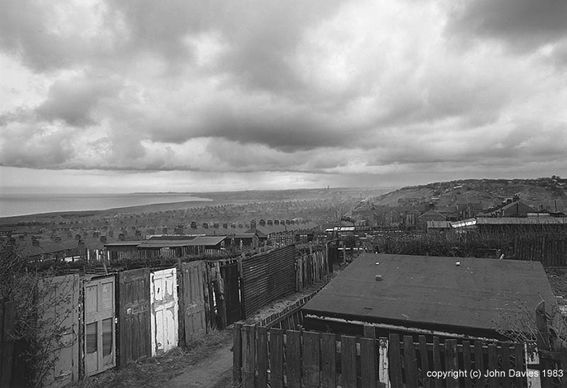
Allotments, Easington Colliery, County Durham © John Davies, 1983
Easington Colliery began when the pit was sunk in 1899, near the coast. Thousands of workers came to the area from all parts of Britain and with the new community came new shops, pubs, clubs, and rows of terraced colliery houses for the mine workers and their families. The town is known for a mining accident which occurred, on 29 May 1951 when an explosion in the mine resulted in the deaths of 83 men.
The Durham Coalfield exhibition focused on one industry’s effect on the landscape – coal production. Davies concentrated on the comparatively few places in the area (about 70 pits were closed during the 1960s) that were still producing coal – mainly 13 working collieries, the major opencast mines, and to a lesser extent the drift mines and sea-coal gatherers. His photographs, with their combination of general view and finely noted detail, make powerful and visually sensitive documents of the effect on the Durham landscape of two centuries of coal mining.
The allotments had changed little since Davies’ photograph was taken, with the old wooden doors still standing proud. However, the town has changed significantly with the closure of the mine in 1993 and the loss of 1,400 jobs. This caused a massive decline in the local economy; Easington Colliery is currently the 4th most economically deprived place in England.
You can see all his photographs from the commission here.
With reference to We English and my interest in leisure, here are two more of Davies’ photographs, including the iconic image ‘Agecroft Power Station, England, 1982’ which features on the cover of The British Landscape:
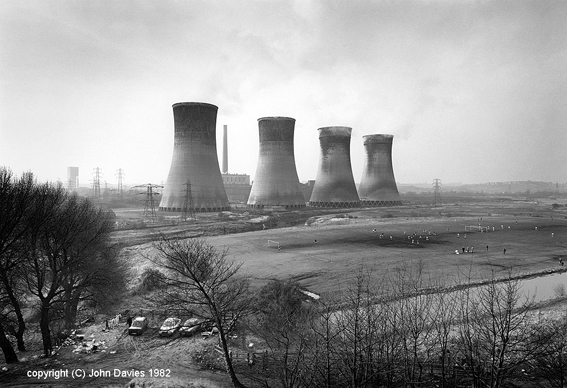
and ‘Bowling Greens, Stockport, England, 1988’:
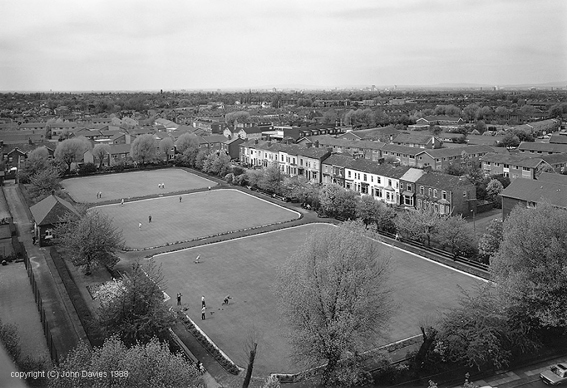
You can read a review of The British Landscape on the blog Photography & Books here.
You can see more of John Davies work on his website here.
Davies’ is represented by Michael Hoppen Gallery in London, and you can read his biography here.
Posted in OTHER STUDIES, PLACES | Comments Off on JOHN DAVIES & EASINGTON COLLIERY
My ebony camera proved to be of great interest to a group of (bored and drunk) teenagers I came across on the site of the old colliery in Horden.

Horden Colliery had been one of the biggest mines in the country. From the beginning of construction in 1900 to nationalisation in 1947 it was owned and operated by Horden Collieries Ltd and was operated mainly for the purpose of working undersea coal.
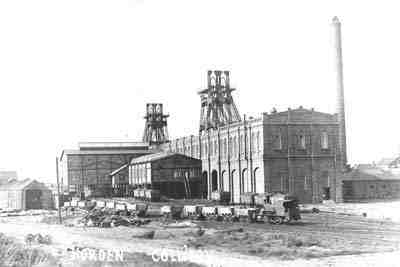
At the height of operating in the 1930s it employed over 4000 men and produced over 1.5million tonnes of coal a year. The colliery thrived until the early 1970’s when water and geological problems occurred.  It finally closed in 1986.
Â
Posted in PLACES | 1 Comment »
We’re in the coastal town of Whitby in North Yorkshire and yes, it’s raining. Heavily. So what to do?
Brave the rain?
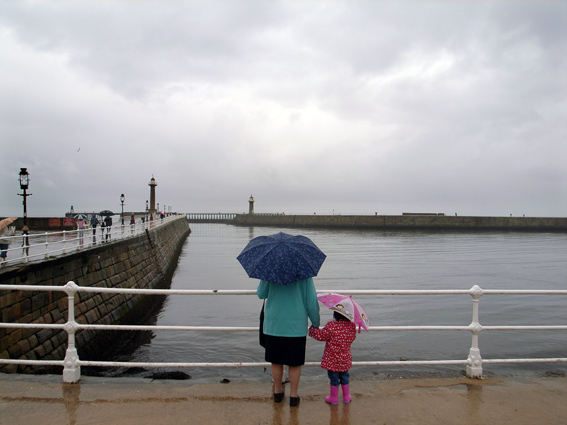
Â
Visit the amusement arcades?
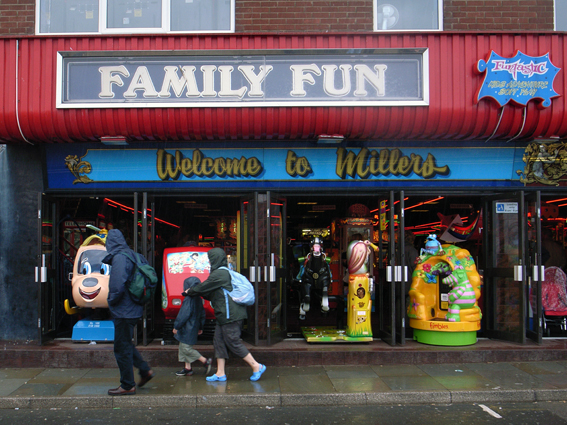
Â
Or watch a dance?
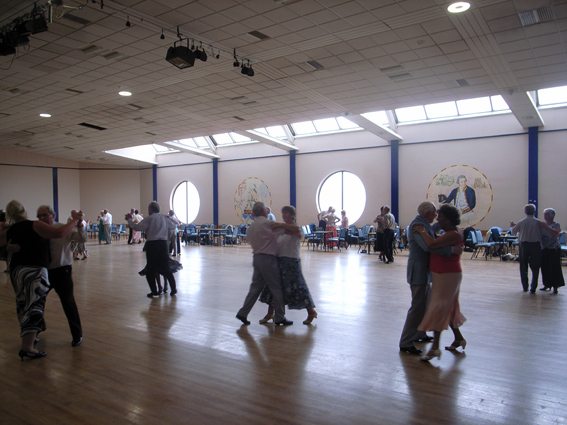
Â
I opted for the latter and went along to an afternoon tea dance at Whitby Pavilion to watch local retirees fox trot and tango to music played by Ray Kirk.  It was a wonderful sight, which reminded me of a series of photographs I made in Arizona on the Snowbirds.Â
Â
Posted in PLACES | Comments Off on WHAT TO DO ON A WET DAY IN WHITBY?
It’s not often that you come across a landscape, urban or rural, that is virtually unchanged in half a century.
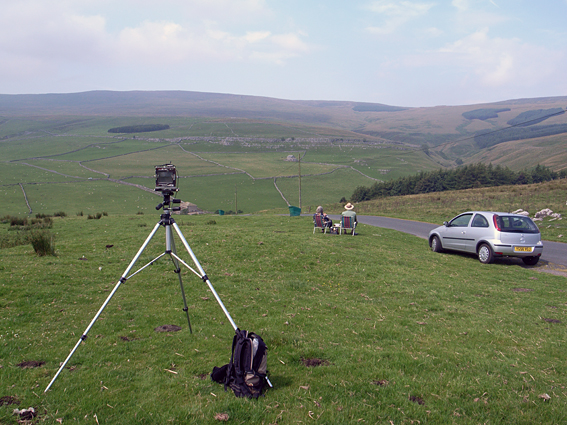
On driving from Malham to Arncliffe, a road which cuts through the picturesque limestone landscape of the South Pennines in the Yorkshire Moors, I came across Les and Doreen Barnett sat on deck chairs looking out over the hills while enjoying a sandwich and flask of tea. Les, who is founder and president of both the Bradford Urban Wildlife Group and Bradford Botany Group, told me that he and Doreen had been coming to admire this view for nearly 50 years. In that time, all that’s changed is a new tractor on the farm and the unwelcome arrival of several roadside salt bins. Traffic is heavier at the weekends, so they only come on a weekday morning.
As W.G.Hoskins writes in his classic text The Making of the English Landscape (1955), “not much of England, even in its more withdrawn, inhuman places, has escaped being altered by man in some subtle way or other, however untouched we fancy it is at first sight.”
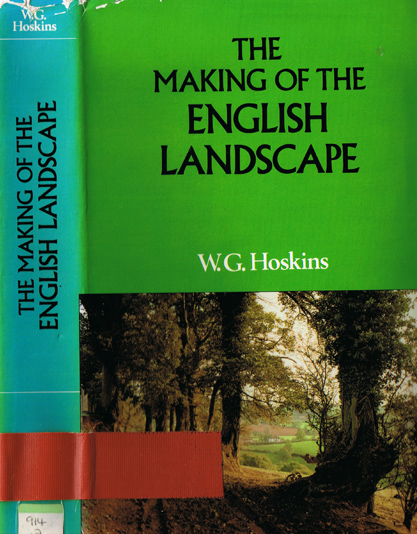
Three influences shape landscape- geology, climate and mankind. The origins of the early industrial revolution are to be found in the South Penines, an area which takes in parts of Bradford, Calderdale, Craven and Kirklees in Yorkshire and Burnley, Oldham, Rochdale and Lancashire County Council. These places bear witness to one of the greatest leap forward man has ever made: the Industrial Revolution. This is a cultural landscape unique in England.
While the 19th Century transformed the region – wool in Yorkshire, cotton in Lancashire, textile wealth that powered the Victorian Age and the British Empire – much of this area is still untouched. The Yorkshire Moors are steeply cut by wooded valleys and a patchwork of hamlets and fields. Acid soils on impervious gritstone rock make the moors a tough but beautiful natural environment. Below the rough grazing of the moor, a distinctive lattice of 18th century drystone walls mark out the ‘in bye’ land: winter pasture for lambing and summer moving meadows for silage and hay.
Posted in LANDSCAPE, PLACES | Comments Off on AN UNALTERED LANDSCAPE
Between 1983 and 1986, Martin Parr photographed holidaymakers and day-trippers in the decaying seaside resort of New Brighton on the Wirral (near Liverpool). Using flash and printing in vivid colour, he shed an unforgiving light on his subjects. The project was published by Dewi Lewis and exhibited at the Serpentine Gallery in 1986 as The Last Resort.
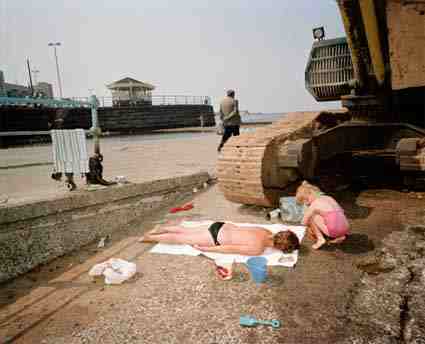
© Martin Parr, The Last Resort
At the time, there was a concerted critical media response to the work with most of the criticism being aimed at the subjects, not the photographs. Since its publication there has been much debate about Parr’s approach to his subject and opinions are very much divided between those who consider his work as cruel and voyeuristic, while others suggest his view is actually affectionate and amusing.

© Martin Parr, The Last Resort
Whatever you think, The Last Resort was a highly original and influential body of work and a wonderful satire on the state of Thatcher’s Britain. It established Parr as one of the world’s most influential and admired photographers, while revolutionising documentary photography in Britain.
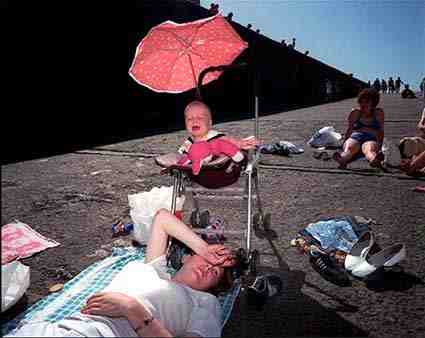
© Martin Parr, The Last Resort
So it was rather surreal arriving in New Brighton on a sunny (and rather blustery) afternoon a couple of weeks ago having all the visual baggage of Martin Parr’s photographs in my head. Of course it was an anti-climax. In the name of progress the area has changed considerably since Parr’s days with much of the Wirral’s northern coastline a sought after area, (we were staying with two university friends, a GP and a trainee Consultant, who recently moved to Hoylake from Liverpool).

© Martin Parr, The Last Resort
A £70 million redevelopment plan for the regeneration of New Brighton was unveiled in 2004, with the aim of bringing jobs and tourism into the area. Known as the Neptune Project, it involved filling in the Marine Lake to build a supermarket, and constructing a lido resort combining a pool and a new marine lake. However the plans were rejected on account of financial feasibility, and scepticism over the actual worth to the community on the whole. In October 2007, the Government rejected a public enquiry into the plan, and an amended plan was approved, which will include a Morrisons supermarket on the seafront, budget hotel and refurbishment of the Floral Pavilion Theatre.
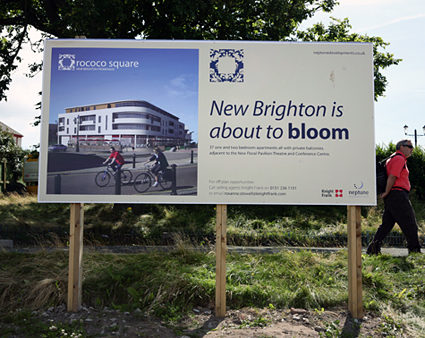
While it’s great that the area has managed to develop and shed its tatty appearance, as is so often the case these days, the re-development is very bland and non-descript. You could be on any promenade in England, there is no individuality just lots of concrete. Although I’m sure New Brightoners are much happier than the resort of Parr’s photographs.
As an aside, there’s an interview with Martin Parr in the current issue of PDN called ‘Why Photojournalism Must Get Modern’. In the interview Parr argues that photojournalism “has to get modern†to regain the attention and support of mainstream magazines. He asserts, “You have to disguise things as entertainment, but still leave a message and some poignancy.”  You can read it  online here.Â
Â
Posted in PLACES, REPRESENTATION | Comments Off on FROM LAST RESORT TO NEW RESORT





























